
How to Use LSA-002 AC Dimmer: Examples, Pinouts, and Specs
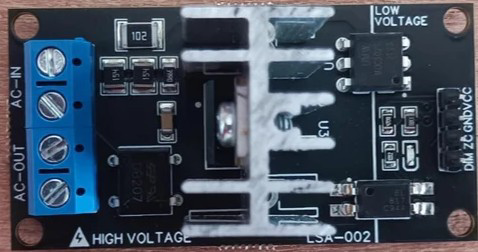
 Design with LSA-002 AC Dimmer in Cirkit Designer
Design with LSA-002 AC Dimmer in Cirkit DesignerIntroduction
The LSA-002 AC Dimmer is a versatile electronic component designed to control the brightness of AC-powered lighting fixtures. By adjusting the voltage and current supplied to the light source, the LSA-002 enables precise dimming, offering energy savings and the ability to create customized lighting ambiance. This component is widely used in residential, commercial, and industrial lighting systems.
Explore Projects Built with LSA-002 AC Dimmer
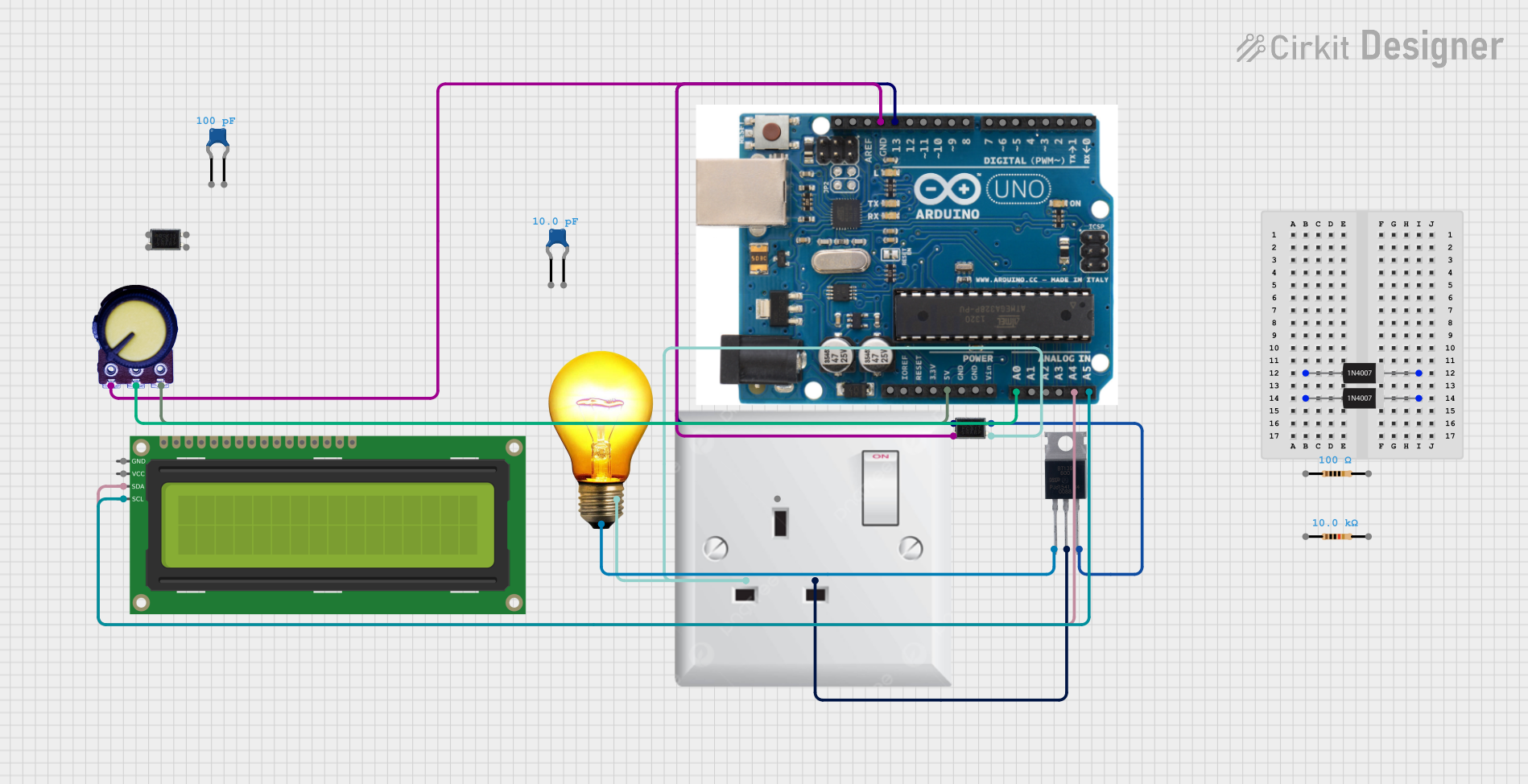
 Open Project in Cirkit Designer
Open Project in Cirkit Designer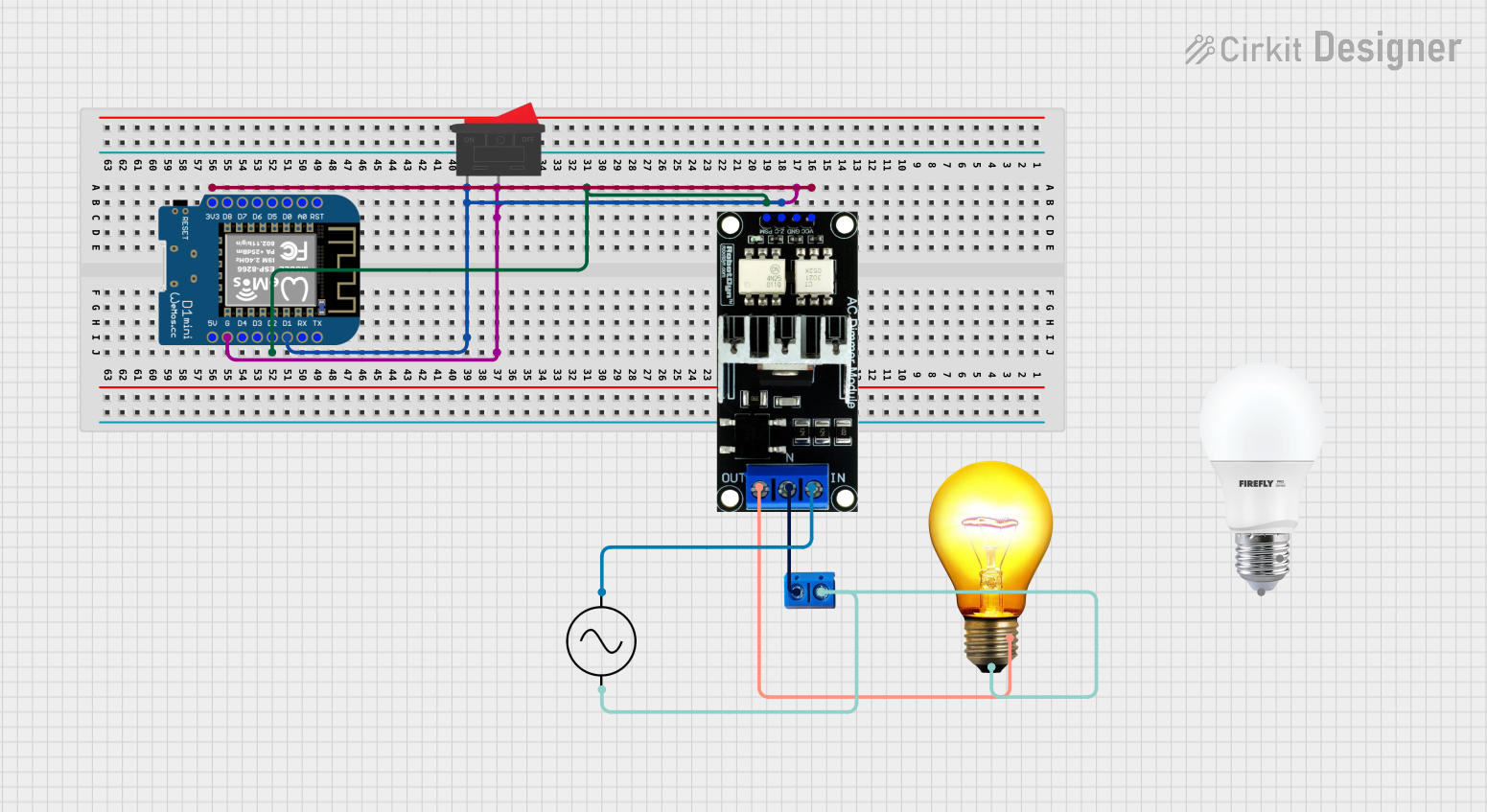
 Open Project in Cirkit Designer
Open Project in Cirkit Designer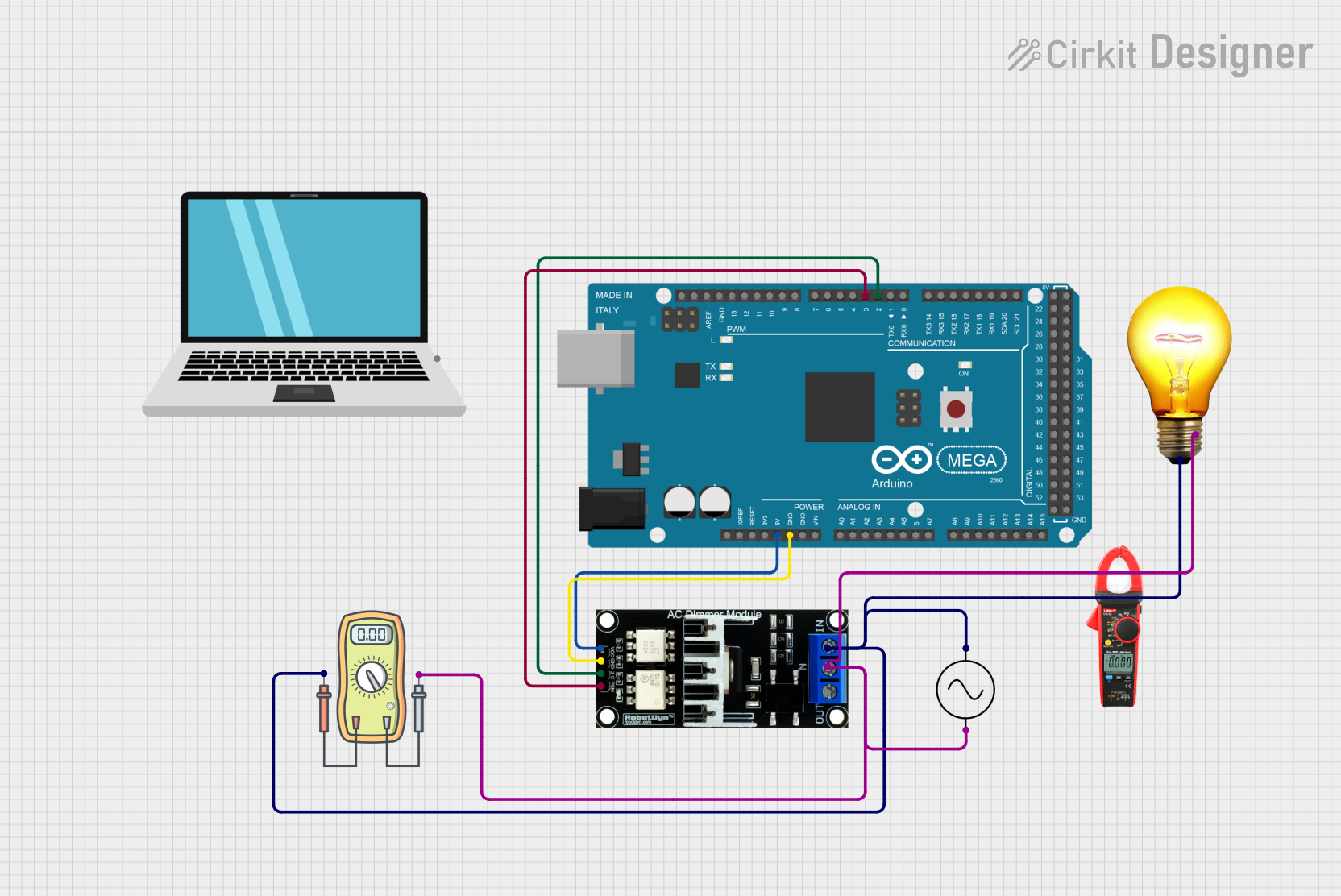
 Open Project in Cirkit Designer
Open Project in Cirkit Designer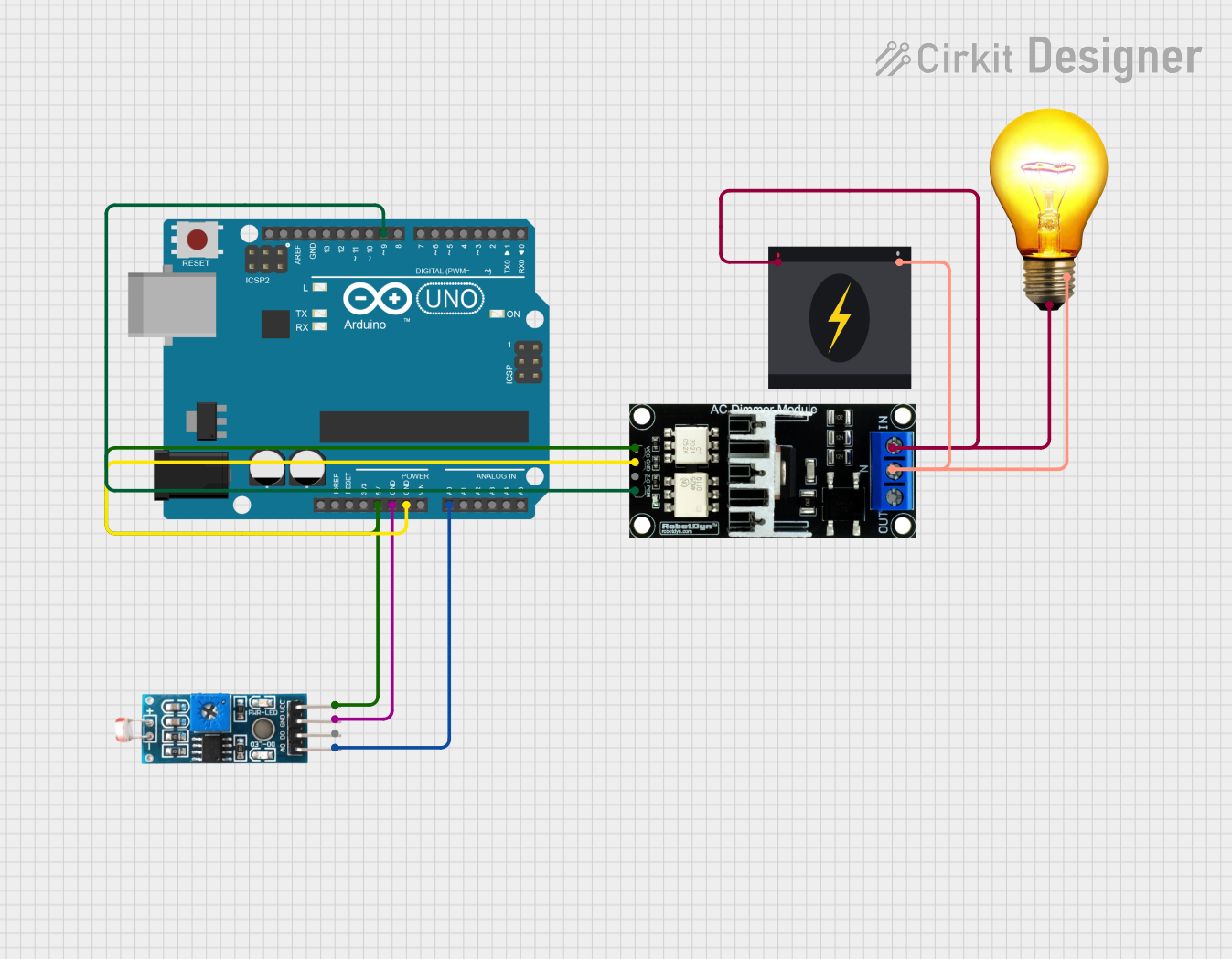
 Open Project in Cirkit Designer
Open Project in Cirkit DesignerExplore Projects Built with LSA-002 AC Dimmer

 Open Project in Cirkit Designer
Open Project in Cirkit Designer
 Open Project in Cirkit Designer
Open Project in Cirkit Designer
 Open Project in Cirkit Designer
Open Project in Cirkit Designer
 Open Project in Cirkit Designer
Open Project in Cirkit DesignerCommon Applications and Use Cases
- Dimming incandescent and halogen light bulbs
- Controlling the brightness of dimmable LED lights (if compatible)
- Smart home lighting systems
- Stage lighting and decorative lighting setups
- Energy-efficient lighting control in offices and homes
Technical Specifications
The LSA-002 AC Dimmer is designed to work with standard AC mains voltage and supports a wide range of lighting loads. Below are its key technical details:
| Parameter | Value |
|---|---|
| Input Voltage | 110V AC to 240V AC |
| Output Voltage | Adjustable (0V to Input Voltage) |
| Maximum Load Current | 2A |
| Maximum Load Power | 400W |
| Control Signal | PWM (Pulse Width Modulation) |
| Operating Frequency | 50Hz / 60Hz |
| Isolation | Opto-isolated control circuit |
| Dimensions | 50mm x 40mm x 20mm |
Pin Configuration and Descriptions
The LSA-002 AC Dimmer typically has the following pin configuration:
| Pin Name | Description |
|---|---|
| AC-IN | Input terminal for AC mains voltage (110V-240V AC). |
| AC-OUT | Output terminal for the dimmed AC voltage to the load (e.g., light bulb). |
| GND | Ground connection for the control circuit. |
| VCC | Power supply for the control circuit (typically 5V DC). |
| PWM | Input pin for the PWM signal to control the dimming level (from a microcontroller). |
Usage Instructions
The LSA-002 AC Dimmer is straightforward to use in a circuit. Below are the steps and best practices for integrating it into your project:
How to Use the Component
Connect the AC Input and Output:
- Connect the AC mains voltage to the
AC-INterminal. - Connect the load (e.g., light bulb) to the
AC-OUTterminal.
- Connect the AC mains voltage to the
Power the Control Circuit:
- Provide a 5V DC power supply to the
VCCpin. - Connect the
GNDpin to the ground of your control circuit.
- Provide a 5V DC power supply to the
Control the Dimming Level:
- Use a microcontroller (e.g., Arduino UNO) to generate a PWM signal.
- Connect the PWM output of the microcontroller to the
PWMpin of the dimmer.
Adjust the PWM Duty Cycle:
- A higher duty cycle increases the brightness of the light.
- A lower duty cycle decreases the brightness.
Important Considerations and Best Practices
- Load Compatibility: Ensure the connected load is dimmable and does not exceed the maximum power rating (400W).
- Isolation: The LSA-002 includes opto-isolation for safety, but always handle AC connections with care.
- PWM Frequency: Use a PWM frequency between 100Hz and 1kHz for optimal dimming performance.
- Heat Dissipation: If operating near the maximum load, ensure proper ventilation or heat sinking to prevent overheating.
- Safety Precautions: Always disconnect the AC mains power before making any connections or modifications.
Example Code for Arduino UNO
Below is an example of how to control the LSA-002 AC Dimmer using an Arduino UNO:
// Example code to control the LSA-002 AC Dimmer with an Arduino UNO
// This code generates a PWM signal on pin 9 to adjust the dimming level.
const int pwmPin = 9; // PWM output pin connected to the LSA-002 PWM input
void setup() {
pinMode(pwmPin, OUTPUT); // Set the PWM pin as an output
}
void loop() {
// Gradually increase brightness
for (int dutyCycle = 0; dutyCycle <= 255; dutyCycle++) {
analogWrite(pwmPin, dutyCycle); // Write PWM signal to the dimmer
delay(10); // Small delay for smooth dimming
}
// Gradually decrease brightness
for (int dutyCycle = 255; dutyCycle >= 0; dutyCycle--) {
analogWrite(pwmPin, dutyCycle); // Write PWM signal to the dimmer
delay(10); // Small delay for smooth dimming
}
}
Troubleshooting and FAQs
Common Issues and Solutions
The light does not turn on:
- Ensure the AC mains voltage is properly connected to the
AC-INterminal. - Verify that the load is connected to the
AC-OUTterminal. - Check that the load is dimmable and within the power rating of the dimmer.
- Ensure the AC mains voltage is properly connected to the
Flickering light:
- Ensure the PWM frequency is within the recommended range (100Hz to 1kHz).
- Verify that the load is compatible with dimming (some LEDs may require specific dimmers).
Overheating:
- Check that the load does not exceed the maximum power rating (400W).
- Ensure proper ventilation or add a heat sink if necessary.
No response to PWM signal:
- Verify the PWM signal is being generated correctly by the microcontroller.
- Check the connections between the microcontroller and the
PWMpin.
FAQs
Q: Can the LSA-002 be used with non-dimmable LEDs?
A: No, the LSA-002 is designed for dimmable loads only. Using it with non-dimmable LEDs may cause flickering or damage to the light.
Q: What happens if I exceed the maximum load power?
A: Exceeding the maximum load power (400W) can cause overheating, damage to the dimmer, or even pose a fire hazard. Always ensure the load is within the specified limits.
Q: Can I use the LSA-002 with a 3.3V microcontroller?
A: Yes, but you may need a level shifter to ensure the PWM signal is compatible with the dimmer's input requirements.
Q: Is the LSA-002 suitable for outdoor use?
A: The LSA-002 is not weatherproof. If used outdoors, it must be enclosed in a weatherproof housing.